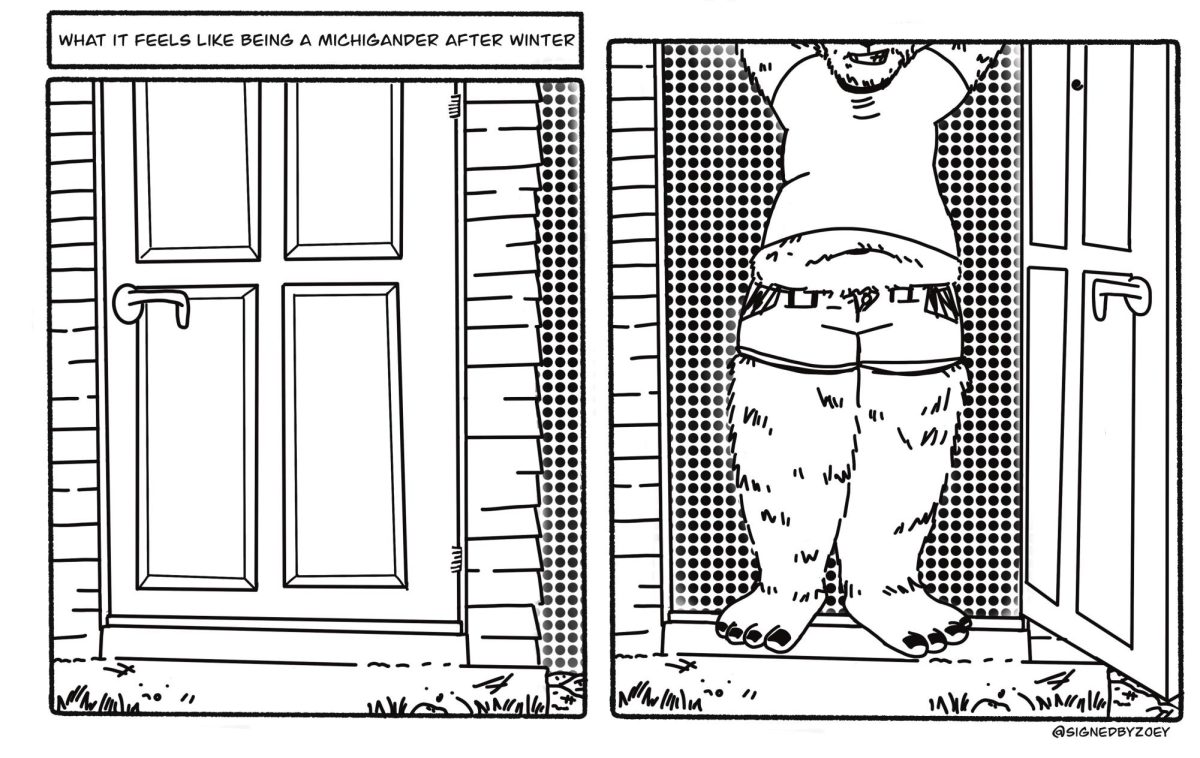Column: The French Dispatch review
Nov 8, 2021
It’s ironic that Wes Anderson’s new film, “The French Dispatch,” is marketed as an ode to journalism despite missing on several key aspects of the profession like story, a cohesive narrative structure and generally highlighting characters.
The basic structure of the movie is told in three parts, highlighting different stories that will be published in the last edition of The French Dispatch magazine, an outlet that must serve some French town in an alternate dimension. It’s amazing how in these 30-minute stories, no emotion is felt towards its individual characters or storylines. If this is how this magazine’s writers tell the stories of their town, they should be immediately fired.
The first story follows a painter, Benicio Del Toro, who is in prison for committing a vicious double homicide. His work is soon noticed by a young entrepreneur, Adrian Brody, and the rest of the story follows Del Toro’s character as he struggles to make his art. Tilda Swinton is the journalist covering this story and somehow fails to capture the audience’s attention by making her piece interesting. Instead of using the classic inverted-pyramid format that almost every journalist references in their writing, Swinton’s character tells this story in a jungle gym format that is trapped in a house of mirrors.
The second story is told by Frances McDormand’s character, an older journalist who soon finds herself in a very uncomfortable sexual relationship with Timothee Chalamet. (From what I can tell), Chalamet’s character is struggling with his place in the world as a blossoming adult while he plays chess and smokes Swisher Sweets. I suppose there was supposed to be meaning in the story as Chalamet leads a group of college students to form their own version of the “Children of the Corn,” town in the godforsaken French city. However, the only thing I learned is to not sleep with story sources.
At what felt to me as the 666-minute mark in the movie, the third story finally began. At this point, I was checked out and wasn’t too concerned with whatever happened to these new characters that were introduced over halfway into the movie. This story follows Jeffery Wright (one of the only Black actors in this very white movie), as he covers the story of the town police commissioner’s son being kidnapped. The only interesting parts from this section were the brief and underutilized appearance from Willem Dafoe, Edward Norton and Liev Schreiber.
“The French Dispatch” was the first Wes Anderson movie I had ever watched and it will certainly be the last. From a technical standpoint, the movie is a marvel. The editing, cinematography and directing are all fantastic. However, this is a film that is very aware that it’s a movie. Without an interesting plot, Anderson relies on slick edits, artistic long shots, creative camera pans and extremely random animation scenes and graphics to hold the audience’s attention for two hours. These fancy tricks got old after 30 minutes.
The dialogue and delivery was excruciating. As a journalist, one of the basic rules of the trade is writing clearly so that anyone who reads a story isn’t confused and can extract information with ease. Instead, the writers for “The French Dispatch” magazine do their best Edgar Allen Poe and Jane Austin impressions. Instead of saying, “they went to the store for milk,” these journalists would write “they progressed towards the institutionalized boutique for cream.”
The aesthetic in the movie was also an issue for me. The film leans in too hard with its quirky designs, peculiar one-liners, wacky clothing and weird characters.
By the beginning of the third story of the movie, I actually had to look up how long the film was. This is the first time I’ve ever had to do that while seeing a movie in theaters. I was relegated to looking up NBA scores to see how many points Cade Cunningham dropped and where the closest Ubers were just to keep my attention.
This movie is the antithesis of journalism. It has a confusing and uninteresting narrative structure, something that a journalist never wants to hear about a story they’ve been working on. It relies on editing, silly dialogue and bizarre characters to keep the audience’s attention.
Wes Anderson tells us that journalists should focus on the obscene and new technologies that they have at their disposal, rather than telling a coherent and important story about their community.



























